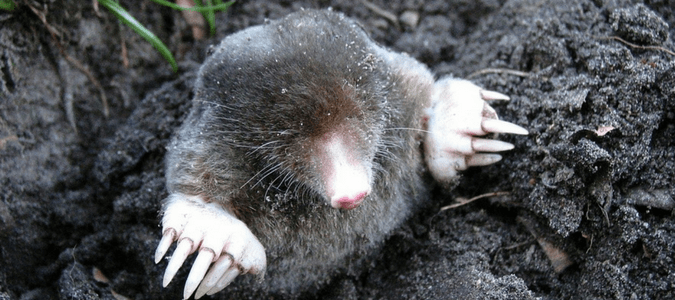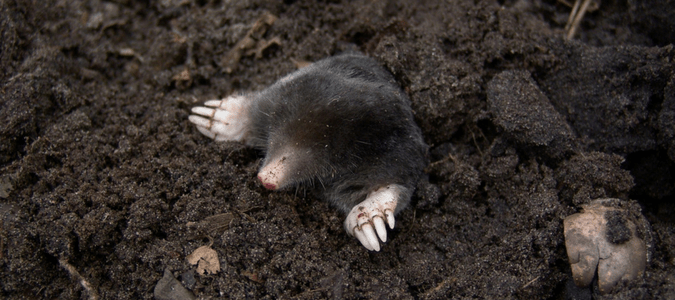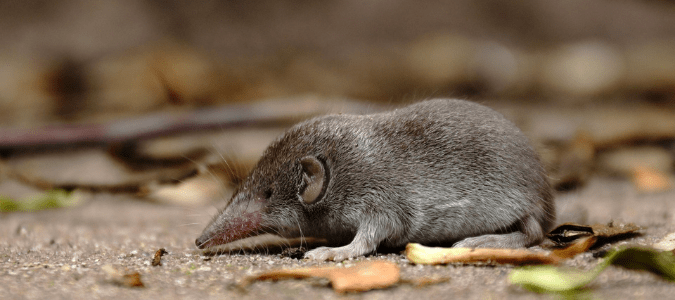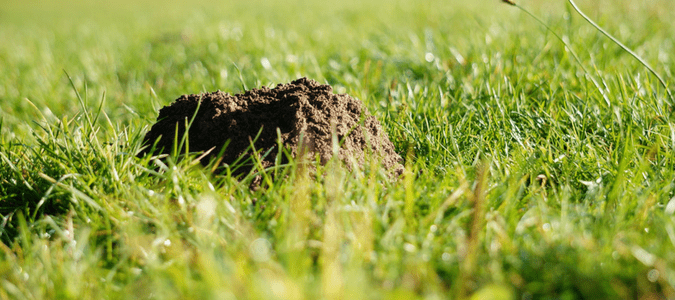It is incredibly frustrating to look out at your yard and see damage like loose dirt and uprooted grass. This is a sign that moles have tunneled beneath the ground of your property and made your lawn their home. These creatures spend half the day looking for insects to devour and they eat nearly their entire body weight in food each day. Their constant hunt for something to eat can result in significant damage to your landscaping.
These pesky predators can be harmful to the appearance and health of your lawn. You spend too much time making your home and property appear beautiful to allow moles to destroy your hard work. But, why do these creatures decide to take up residence in your yard anyway?
Moles are attracted to your yard because it is a perfect place to find all their favorite foods. So, by better understanding the diet of moles and the process in which they find that food, you will be better prepared to recognize the presence of moles.
Mole Habitats and Habits
Moles are a very common problem for homeowners across the United States. Moles often live in yards in rural and suburban areas because these types of homes usually have large lawns. Mulch and compost piles are also very attractive to worms and therefore invite more mole activity.
Moles tunnel through the soil under the surface of your lawn looking for food, searching for possible mates and making more room to live and sleep in. Moles have large front paws that easily tunnel through dirt, allowing them to move quickly. These creatures can travel up to 150 feet underground each day.
It is unlikely to actually spot a mole because they live underground. However, you will notice the damage they cause all across your lawn. You may spot excess soil in small hills where they have surfaced. Additionally, your grass may be elevated in certain areas where moles have tunneled in search of food. While walking in your yard, you may step on hollow spots where moles have burrowed underneath.
The underground tunnels that moles create are not only ugly, but they can also help other more dangerous pests invade your yard. In the worst case, moles may tunnel underneath the foundation of your house, causing extensive damage to your property.
What Moles Eat
Moles are insectivores, which means that they eat insects, like grubs and earthworms as well as insect larvae. The presence of moles in your yard is a sign that there are many insects, both welcome and unwelcome, surrounding your home.
Here is a list of some of the types of insects that moles eat:
- Beetles
- Grubs
- Worms
- Larvae
- Millipedes
- Centipedes
- Spiders
While some insects that moles eat may be harmful to your landscaping, such as Japanese beetle grubs, moles also consume other insects that are useful, like earthworms.
How Much Moles Eat
Despite their small size, moles can eat large amounts—up to 80 percent of their weight in insects every single day. That adds up to an estimated 40 pounds of food annually. Some of these insects you may not want around your house; however, moles will tear up your yard hunting for their prey.
As experts in digging, moles will tunnel throughout your yard, often without coming up above ground but leaving signs of their presence all across your property. If you have a garden, moles can be even more annoying, displacing soil that you have raked into place.
It is important to deal with moles right away so that the problem does not become even worse. Experts can help you tackle any mole problem and get your yard looking great again.
Shrew Versus Mole: How Do You Know the Difference?
Moles are often confused with other lawn animals like shrews. Learning more about the differences between moles and shrews will help you figure out what’s digging up your lawn.
How to Identify Moles
Moles stand out because of their recognizable features, which you can see in the image above. Here are some common traits of moles:
- Tiny eyes and ears that aren’t visible to humans
- A pointed snout
- Large front feet with sharp claws
Moles also have distinguishable habits, such as:
- They dig underground tunnels and create raised molehills
- They are aggressive predators
- Moles like to work alone and ferociously defend their territory
- They feed on earthworms, beetles and other bugs
How to Identify Shrews
Shrews are similar in look and behavior to moles, but, as you can see in the image above, there are key differences that will help you know what kind of pest is causing mayhem in your yard. The main distinction between moles and shrews is their size. Moles are much larger, and shrews look more like mice. Here are other physical characteristics of shrews:
- Shrews have pointed snouts
- Their front feet are much smaller than moles
- Their eyes and ears are small but still visible
- They have dense fur that is mouse-like
Shrews have the following habits:
- They also dig their own tunnels, or they reuse pre-existing tunnels made by moles and other creatures
- They are good climbers and may look for food in trees
- They are also territorial and mark their areas with scent
- Like moles, they feed on earthworms, beetles and other bugs found in soil
- They create holes in your yard and dig tunnels that create raised surfaces
A pest control professional can help you identify whether you’re dealing with shrews or moles and can come up with a plan to control these pests.
When Do Moles Come Out?
When dealing with mole damage, it is important to realize that just because you cannot see moles does not mean they are not active under your lawn. The visible presence of moles above ground is not nearly as much of a concern as what they are doing beneath the surface of your yard.
When Moles Reproduce
Many homeowners deal with moles each year. While you may have issues with moles at any time of the year, moles often reproduce in the spring.
Because moles live alone, when they search for mates or begin reproducing, they will tunnel underground even more. Whether seeking out another lonely mole or building a nest for a new mole family, higher mole activity in March and April will likely make tunneling even more noticeable.
When Moles Are Most Active
Moles may surface at night when they feel safer to emerge. They are drawn to moist soil so a recent rainfall may make them more active above or below ground.
Moles do not make good prey because they do not often come up above ground. Some domestic animals like dogs and cats can be helpful in keeping moles away from the surface of your lawn, but these pets are too large to chase moles into their tunnels or nests underground.
Wild animals like coyotes are also a threat to moles; however, having these types of animals on your property can be a more urgent concern than moles.
Whether you have tunnels under the surface of your lawn or molehills above ground, moles can damage your landscaping and create long-term issues. There is not much you can do on your own to rid your home of these pests. While there are many folk remedies that homeowners try to catch or kill moles, these are almost always unsuccessful. The most efficient way to deal with this pest problem is to contact professionals.
ABC Can Control the Moles on Your Property
If you’re dealing with moles in Texas, you don’t have to deal with this problem on your own. The team at ABC Home & Commercial Services are experts who can help control your pest problem. We will create an effective treatment plan for your yard, so you don’t have to worry about these pesky creatures. Additionally, we have a lawn care team that can help deal with the repercussions of mole problems. For example, we can help fix your bumpy lawn.




